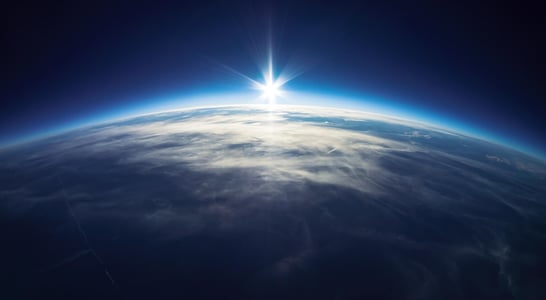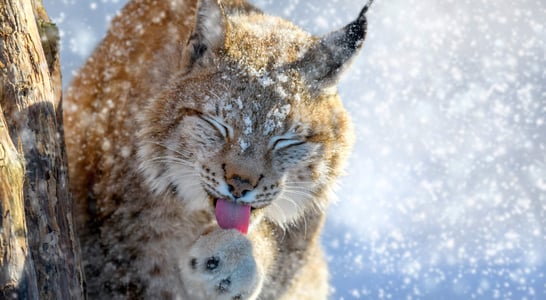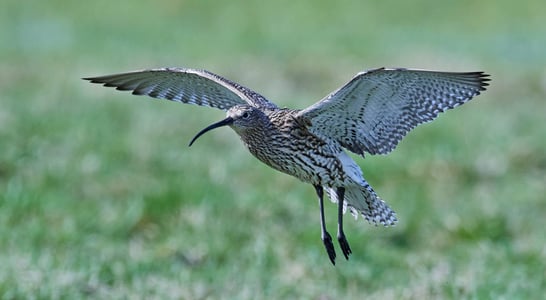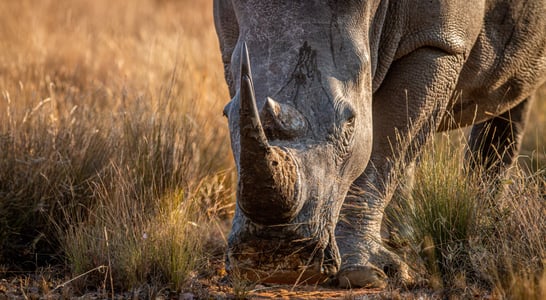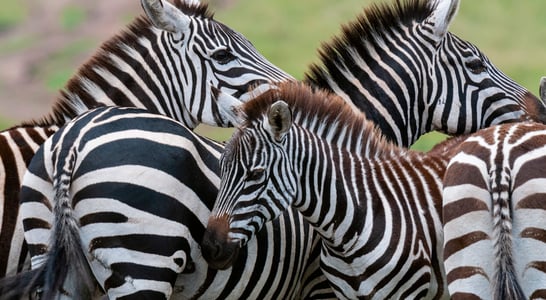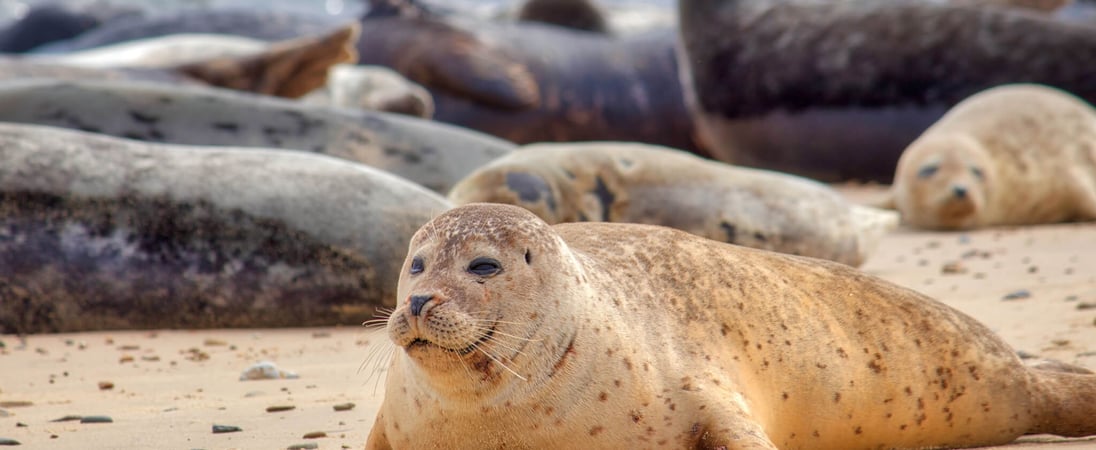
International Day of the Seal
Often called the ‘dogs of the sea’ because of their curiosity, playfulness, and affection, seals are also known in German as seehunds, meaning sea hounds.
International Day of Seal brings attention to these lovable marine mammals and raises awareness about their plight!
How to Celebrate International Day of the Seal
Get creative with ways to show support and celebrate International Day of the Seal, including some of these ideas to get started:
Help Protect Seals
Internaitonal Day of the Seal is a great time to get involved with groups and charitable organizations that work to protect those animals who can’t protect themselves, including seals.
Sign up to volunteer with such an organization or make a donation to a non-profit that is working hard to change cruel practices, introduce protective legislation, and make the seas and oceans a safer place for seals to live.
Check out some of these groups to see about getting connected:
- Seal Protection Action Group
- Seal Conservation Society
- Marine Mammal Center
- Seal Conservancy
Learn and Share Fun Facts About Seals
Did you know that seals are categorized as ‘pinnepeds’, which means they have flipper feet?!
An excellent way to increase knowledge and improve awareness for the International Day of the Seal might be to learn some interesting facts and trivia about these fascinating creatures.
Then, share it with coworkers in water cooler conversations, with family members over dinner or with friends over a cup of coffee or glass of wine.
Head over to the local library to check out a book on seals, or get started with some of these fun facts:
- Seals vary in size, with the smallest weighing around 90 pounds and the largest can weigh more than 8,000 pounds!
- Seals can sleep either on water or on land – usually on land when they are searching for warmth, and they have pups
- Seals can hold their breath for a long time, some of them for up to two hours
- All seals have ears even if they don’t look like it – they are just located beneath the skin and can’t be seen
Get on board with celebrating not only seals but other amazing marine mammals and wildlife with some other themed days throughout the year, including Marine Mammal Rescue Day in April, International Day of Action Against Canadian Seal Slaughter in March, and World Dolphin Day in September.
International Day of the Seal FAQs
What led to the first laws protecting seals?
Seals faced near extinction in the 19th century due to aggressive hunting.
In 1911, the United States, Japan, Russia, and Great Britain signed the North Pacific Fur Seal Treaty, the first international wildlife protection treaty.
It limited hunting in international waters. This landmark treaty paved the way for further animal conservation efforts worldwide.
Do different cultures view seals differently?
Yes, various cultures have unique beliefs about seals. In Celtic mythology, seals are “selkies”—mystical creatures that transform into humans.
The Inuit see seals as spiritual creatures that provide both food and guidance. Icelandic folklore warns of seal women who lure people to sea, blending respect with mystery.
Why are seals sometimes confused with sea lions?
Seals and sea lions look similar but differ in behavior, anatomy, and vocal sounds.
Seals have small flippers and move with a “wiggle,” while sea lions have larger, rotating flippers that allow them to “walk” on land. Sea lions bark; seals make softer, grunting sounds.
These differences help identify each species and understand their lifestyles.
What are some unusual ways people celebrate this day?
In Norway, families sometimes hold “seal” picnics by the sea, sharing meals while observing seals in their natural habitat.
Alaska has educational programs that teach children about seals’ roles in marine ecosystems.
Other countries organize seal-themed art contests, where people create sculptures or paintings of seals to raise awareness.
What is the most unusual seal species?
The Baikal seal, native to Russia’s Lake Baikal, is the only freshwater seal species.
It has adapted to the lake’s cold, isolated waters over thousands of years. These seals are small and unique, surviving in one of the world’s oldest and deepest lakes without any access to the ocean.
Are there any myths about seal conservation?
Some believe seals overpopulate and harm fish stocks. Studies show that fishing practices and climate change impact fish stocks more than seal populations.
Seal populations are usually controlled by natural predators and environmental factors, not by significantly harming fish levels.
What are the biggest threats seals face today?
Besides hunting, seals face pollution, particularly plastic and toxic chemicals.
Microplastics enter marine food chains, affecting seals’ health and reproduction. Climate change, which melts ice habitats, also forces some seal species to travel farther for food, threatening their survival.
Which famous seals have become local legends?
André the Seal became famous in Maine for returning to his human friends every summer.
In Ireland, a harbor seal named Sammy charmed locals by swimming close to shore to greet visitors. These seals gained fame for their friendly behavior and loyalty to specific areas.
How have seals inspired technology?
Seals inspired advancements in underwater navigation. Their whiskers detect subtle changes in water currents, helping scientists develop underwater sensors.
These sensors help submarines navigate turbulent waters by mimicking the precision of a seal’s whisker-based navigation.
How do indigenous communities use seal parts sustainably?
Indigenous Arctic communities use nearly every part of the seal. Blubber becomes fuel and waterproof clothing. Bones turn into tools, and skins are used for shelter.
This tradition reflects sustainable resource use, blending cultural respect with environmental consciousness.
History of International Day of the Seal
International Day of the Seal was first celebrated in 1982 when it was established through the efforts of the United States Congress.
The event’s goal was to raise awareness about and draw attention to the cruelty of practices such as sea hunts, which put these sea creatures at risk. Sadly, some seals are already extinct, while others are still on the endangered list.
The hope was that this type of event would improve public information and promote better protective actions and legislation for these little creatures.
Sometimes also called International Seal Day, this event is typically celebrated in late March, but a small number of locations have it scheduled for observance on January tenth.
See what else is happening…
There’s always more going on every month at Days Of The Year. Here are our favorites this month!
Also on ...
View all holidaysNational Goof Off Day
Taking a break from the hustle and bustle of everyday life to have some fun and let loose is always a good idea every now and again.
Earth Hour
Taking a stand for our planet by flicking the switch and embracing the beauty of a starry night, one bulb at a time.
Gryffindor Pride Day
Lion-hearted and fearless, they stand up for what's right, showing the world that courage isn't just about a scarred forehead.
National Corn Dog Day
Get ready to enjoy a delicious snack on a stick! This crispy and savory treat will make your taste buds dance with joy.
We think you may also like...
International Lynx Day
These wild felines, known for tufted ears and stealthy ways, roam their habitats with a cool confidence that's totally captivating.
World Curlew Day
Graceful shorebirds, facing threats, symbolize the delicate balance of ecosystems, urging awareness for their preservation and conservation.

